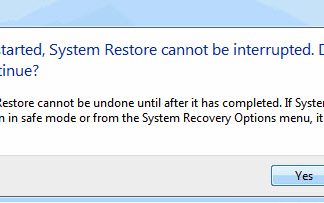The term interactivity has become a buzzword in the eLearning industry. Technological advances have provided leverage to the instructional designers to exploit the multimedia tools to make the program interactive. What is Interactivity?
Is it clicking on options, hovering your mouse, flipping through the content? Then you are wrongly informed. Providing meaningful experiences for learners with the help of meaningful content while applying the concepts in an interactive environment is what interactive eLearning actually delivers. Simply put, it can be defined as the communication that happens between the learner and the computer that keeps the learners engaged and hooked to the eLearning program.
Such learnings achieved helps the learners to retain the knowledge for long and provides the learners an opportunity to process the content at their own pace. As learners get to work on higher-order thinking like interpreting, summarizing the information, the learning pace also increases.
Benefits
When you get a chance to interact, you get a sense of achievement. These interactions keep the learners engaged and motivated and exercises the critical thinking muscles leading to meaningful learning. Listed below are some of the benefits of interactive eLearning.
Corporate employees and adult learners do not like to be told what to do

With the use of interactivity tools, the learning can be portrayed as learning of their choice. Using the multimedia options, showing the tasks practically is a better absorbed and highly accepted method of learning as the learner does not get the feeling of being commanded. Including visual components makes the content more eye-catching, eventually providing a better learning experience.
Most of the training programs are made interesting by including both audio and videos

Based on the topic and objective of the course, you get the leverage of including simulations, games, drag and drop interactions, which involves a lot of mental activity keeping the learner active and engaged. These modes even encourage the learner to retry multiple times to success that ensures to reduce the dropout rates.
By providing real-life scenarios related to work, the learner gets the leverage to relate to the actual situations later. This encourages them to learn from their mistakes and allows them to take risks. It also allows and encourages decision-making capabilities and provides a wider perspective in a safe environment. With all this, they will be better prepared to handle real-time situations and are sure to perform their tasks better.
In an interactive environment, the learner is responsible for their learnings as they get complete control of the learning content and pace. With the combination of past experience, new learnings, and the given interactive scenarios, the learner gets to think critically with the help of hints and clues given. The timely feedback helps them refine their problem-solving skills and enable them to judge the situations better by keeping various aspects in place.
The compelling storylines, proactive questions, quizzes, creates an environment that develops interest and binds the learner to the content. By keeping the learners engaged and involved, it is obvious that the learner will retain the knowledge better and for longer. Interactivity will arouse their analytical skill by putting their thinking caps on. Completing the tasks before moving to the next module will keep them absorbed and engaged.
Curiosity leads to learning

Interactivity leads to creating curiosity that not only engages the learner but makes them understand the concepts better. Timely rewards and recognition acknowledge their achievements and add to the confidence while increasing the engagement. The inclusion of reinforcement exercises or collaborative activities or relative quizzes leads to repeated practice that leads to enhanced learning retention and better application of the learning in the real world.
Inclusion of GIFs, videos, audios, animations spices up the content by adding the fun element to eradicate boredom. The studies have proven that learning through various multimedia modes is better retained and more engaging. The level of involvement and motivation is enhanced with the help of these simple tools. The rate of retention of such modes is way higher than that of textual information.
We have understood the benefits and impacts of interactivity in any given eLearning course. Yet, the saying, “excess of everything is bad” stands true in this scenario as well. What are the factors that can leave a negative impact on the course or can make the learner take a U-turn to even make the learner drop the course:
Overuse of any animations and sounds might end up distracting and irritating the learner by diverting their attention. Any amount of notifications, pop-ups, sounds cannot make the module interesting and interactive if the content is not meaty.
Excessive use of the “Next” button will only make the learner tired of clicking on the Next button. The learner might even phase-out and just keep clicking the button to scroll through the content without actually understanding the topic. The learner might even get distracted from the topic while searching for the button.
Activities are interactive

However, overuse of the same might lead to repetitive learning objectives making it boring. Too many activities, videos, animations, graphs can lead to learners missing out on important content. This also leads to making the course material unnecessarily heavier that might lead to technical glitches or may take extra time to load the content.
Today is the age of mobile learning. The learners like to pursue their courses on the device of their choice. Thus your eLearning programs must be responsive and work efficiently on all the devices. The learning management system from Inquisiq R4 is the solution to the courses that run efficiently on all your devices. Click here to check out the robust features!
Conclusion
Including interactivity adds value to your eLearning courses. Having said that, the same should be optimally used without overloading your course with unnecessary animations and videos. The same applies to including the activities, they should not be overloaded. Too much multimedia and activities might confuse the learner.
The learner might end up missing the important content hidden in extra multimedia and activities. At the same time, including calculated interactivities will lead to a better-learned employee contributing to the positive growth of the organization.



















